|
March Brown Nymph
This pattern of the March Brown Nymph was developed
by me in the early 1970's when fishing the Esopus River
in New York and for many of the streams of my youth
in New Jersey and New York State. Although this fly is
tied to simulate the natural nymph state of the March Brown
May Fly (Stenonema vicarium) of the North Eastern part
of the US, I have used it for over twenty years as a great
pattern for the Western Golden Stone Fly Nymph and
many other lesser Stone Flies.
Materials List:
Hooks: 1xL Nymph Hook weighted with .20 leadwire.
Sizxes 10, 12, and 14.
Thread: 3-0 Burnt Orange.
Tail: 3 Pheasant Tail fibers.
Body: Australian Opossum dubbing - muddy brown
to natural amber color.
Ribbing: Large flat nylon thread, dark brown.
Wing Case: Dark turkey tail feather strip.
Legs: Hungarian Partridge body feather.
Thorax: Australian Opossum dubbing same as body,
heavy and bushy.
Head: Australian Opossum same as body. A tight
dubbing to form a head just above the eye of the hook. Finish fly
with whip finish.
Tying Instructions:
1. Wrap .20 or .25 lead wire around hook shank. Use as many
wraps as possible to get as much lead on the shank to help sink the fly.
Wrap from bend of hook to eye of hook. Over the lead wire wrap the
3-0 orange thread starting from the eye of the hook to bend to secure
the lead. A good amount of head cement should be used on the body
at this time.
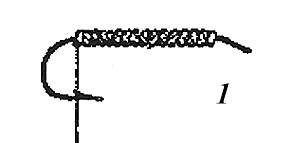
2. Tie in a very small ball of dubbing at the bend of the hook.
On top of the dubbing tie the three tail fibers. The tails should be as long
as the nymph body. The March Brown has three very long tails. If
tying the Golden Stone tie just two tails not as long.
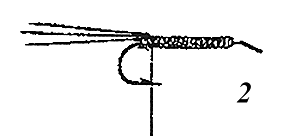
3. Tie in your large flat brown thread for ribbing and hold
aside.
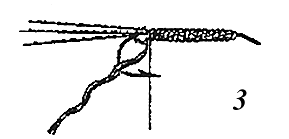
4. Dub the body at this time from the tails to the
bead of the fly. I like a nice tight body and somewhat
tapered. Now Rib the body with the Brown thread and
tie off about the middle of the fly.

5. Tie in a 1/4" strip of Turkey Tail on top of the
fly halfway from bend of hook to eye.

6. Tie in a nice full Partridge body feather. Hold
upside down and stroke the fibers towards the feather ste.
Tie in the tip of the feather and add more dubbing to form
the thorax.
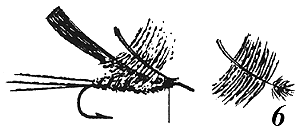
7. Pull over the partridge and tie off near the eye.
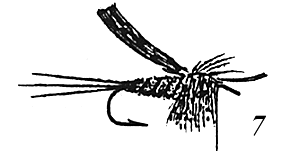
8. Pull over the Turkey for the wing case and tie off
near the eye.
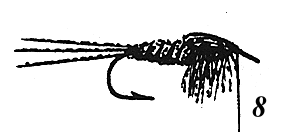
9. Tie in a nice tight ball of dubbing to form the
head for the March Brown.

10. Finish the fly with a whip finish and tie off. At
this point the fly should be lightly flattened with a small
plier. With a small wire brush or a dubbing teaser the
thorax area should be teased to simulate the gills of the
March Brown nymph.
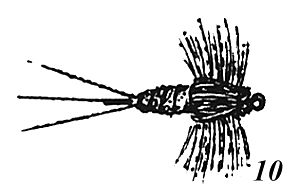
Fishing Suggestions:
I have fished this fly for over 20 years on the
Madison and many other rivers of the Yellowstone
area as well as the Eastern Streams with great success.
This little fly is my first choice when nymph fishing
and it has taken some very large trout. It is best
fished dead drift with an indicator and no additional
weight when possible. ~ Bob Jacklin
About Bob Jacklin:
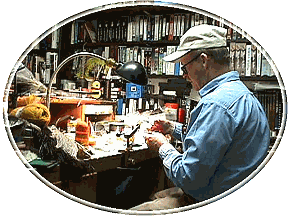 Bob grew up in New Jersey fishing for native brook trout
in the headwater streams in the northern part of the state.
An ardent fly fisherman and fly tier from his early days, he
began to tie flies commercially in 1963, developing many
unique and widely accepted patterns. Some of which are
available on his
Jacklin Fly Shop web page. In my opinion, they should
be Collector's Items!
Bob grew up in New Jersey fishing for native brook trout
in the headwater streams in the northern part of the state.
An ardent fly fisherman and fly tier from his early days, he
began to tie flies commercially in 1963, developing many
unique and widely accepted patterns. Some of which are
available on his
Jacklin Fly Shop web page. In my opinion, they should
be Collector's Items!
Bob is a supurb casting instructor, and has given free
casting instruction every Sunday evening from 7:00 p.m. until
dark (during fishing seasons) at a casting pond across from
his shop for many years. Bob by the way, dug the pond himself,
by hand.
J Castwell and I have known Bob for some 25 years, and highly
recommend him, his shop and guides to anyone traveling the
Yellowstone region! You can also find Bob's recommendations
for where to fish and with what in our
Yellowstone section in FAOL Traveling.
Stay tuned - Bob will soon begin a Weekly Tying Tip section here!
~ LadyFisher
|












